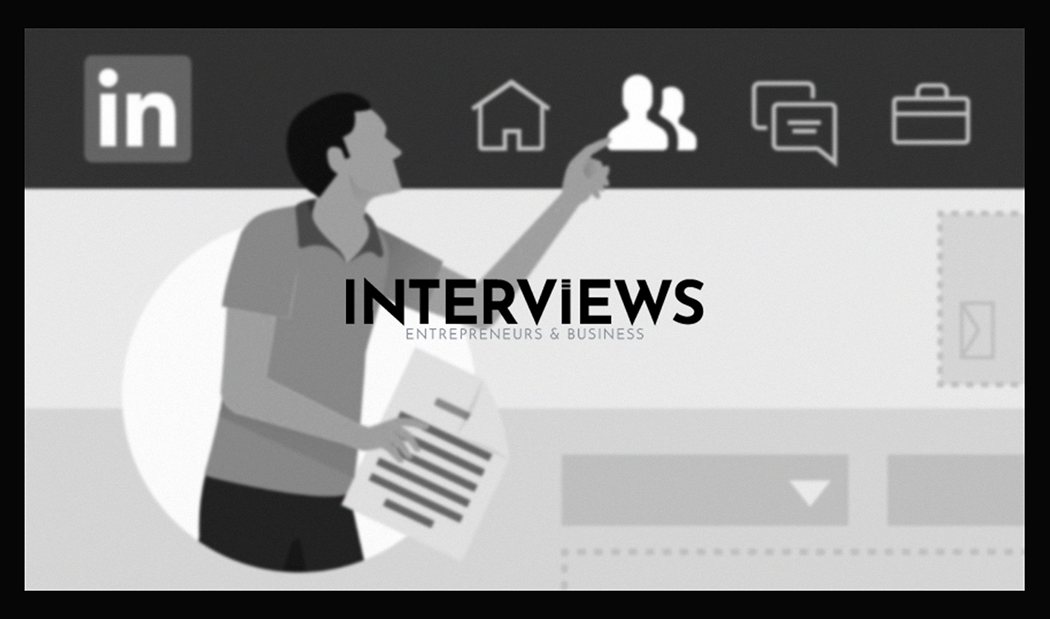Level Up Your LinkedIn Game: Reposting and Sharing Like a Pro (Without Looking Like a Bot)
You are on LinkedIn, working through the confusing realm of networking. Your company page is running smoothly. Your profile looks good. But then, content issues arise. Should you repost? Share? What’s the secret? No worries, we have all pondered the ‘share’ button.
Let’s decode LinkedIn reposting and sharing, focusing on company pages. This guide will help you become a LinkedIn content ninja without the cliche quotes. We want valuable and visible, not just something to scroll past.
I. Reposting on LinkedIn as a Company Page: Amplify, Don’t Just Echo
A. Reposting 101: The Super Simple Steps
Reposting is LinkedIn’s take on retweets, but for professionals. Here’s how your company page can leverage existing great content:
- First, switch to your Page admin view. Command your company from admin, not personal profile.
- Next, go undercover and “View as member.” This shows you LinkedIn from your audience’s perspective.
- Visit the “Home” tab. That’s where content lives.
- See a post that shines? Hover over the “Like” button for options or hit “Comment” or “Repost”.
- To repost, find the “Repost” button hiding under the post. It should be clear enough.
- Quick Repost? Click “Repost.” Want to comment? Choose “Repost with your thoughts.”
B. Adding Your Signature Flair: Sprinkle, Don’t Flood
Reposting is not just copy-pasting. Treat it as remixing music, not replaying it. Your “flair” is key for adding value for your audience.
- Select “share with your thoughts.” It’s your moment to shine.
- Add insightful comments. Analyze the relevance of the post.
- Use hashtags and tags. Choose wisely, avoid chaos. Relevant hashtags only.
- Essentially, “Repost with your thoughts.” allows for context and maybe a well-placed emoji.
C. Reposting Roadblocks: The Privacy Police
LinkedIn has rules. There are some privacy hurdles when reposting, like gentle barriers, not hard walls.
- Privacy Restrictions: “Connections only” content cannot be reposted. Respect the original poster’s privacy.
- Group Post Restrictions: Content in LinkedIn Group stays there. No reposts allowed. Think of it as an exclusive club.
- Yes, we repeat. “Connections only” = no reposts. Group Post = no reposts.
D. Liking and Commenting: The Admin Center Advantage
Admins have advantages. Liking and commenting as your company page is easier.
- The “Admin Center” on your page is your command center. Use it.
- LinkedIn confirms you can “React, Comment, and Share as an Organization.”
- When engaging, do so as your Page. Use the dropdown to Select your Page and click “Save.”
- YouTube has tutorials too. Search for “How To Like & Comment As A LinkedIn Company Page.”
E. Reposting Perks: Brand Booster
Why repost? Is it busywork? No. There are real benefits for companies wanting visibility.
- Brand Visibility: In a tough job market, companies must stay visible. Reposting job ads helps keep your brand relevant.
II. Posting and Sharing Content on LinkedIn: Personal vs. Page – Know Your Arena
A. Personal Profile vs. Company Page Posting: Pick Your Weapon
LinkedIn gives you two stages: your personal profile and company page. Use them effectively as tools for different purposes.
- Personal Profile: Lead generation and branding are key here. Even promoting your company through a personal profile works better for engagement. People prefer people.
- Company Pages: Brand representation. Showcase the entity rather than a person.
- Personal profiles: Networking tools. Company pages: Brand promotion. Choose the right stage wisely.
B. Sharing from Business Page to Personal Profile: Cross-Promotion Power
Want to enhance your company page content? Share it on your personal profile. It’s cross-promotion within LinkedIn.
- It’s easy. Find the post on your company page. Click “Share.” Done! Add your personal angle for more impact.
C. Posting a Job on a Company Page: The Job Ad Juggle
Job postings have quirks on LinkedIn. You cannot *directly* post from your company page, but connections exist.
- No direct job posting from the company page itself. It acts like an announcement board, not a portal.
- Corporate contracts and “Recruiter” are essential for paid job postings.
- You can learn more through sources like Workello. Google “Learn How To Post a Job on a LinkedIn Company Page – Workello.”
D. Job Post Visibility: To Frame or Not to Frame?
The hiring frame on your profile picture during job postings increases visibility. Consider your decision…
- No hiring frame means less profile visibility on the job details page. It’s like being incognito, less branding impact.
- No frame = lower visibility on the job page. Frame = more visibility. Pick wisely.
III. Creating and Managing a LinkedIn Company Page: Building Your Brand Basecamp
A. Company Page Creation: The Birth of a Brand Page
Ready to create your LinkedIn home for your brand? You need a personal profile first.
- Personal Profile Prerequisite: No profile? No company page. Basic rule of LinkedIn.
- Locate the “For Business” icon, found in your dashboard corner.
- Select that icon, scroll down, then click “Create a Company Page +.”
- Select “Company” as the page type.
- Fill in company information. Standard prompts await you: name, industry, website, etc.
- Seriously, click “For Business” then “Create a Company Page.” Let’s keep it straightforward.
- Complete all info to create your company page.
B. Separating Company Page from Personal Profile: Maintaining Boundaries
You can keep your company page distinct from personal chaos. This separation is key for professionalism and clarity.
and personal lives, distinct… mostly.
- Separate company page = independent business presence. Vital for professional clarity and sanity.
- “Create a separate LinkedIn Business Account” is what you do when you set up a company page. It’s a unique entity.
- You can’t fully “unlink” your personal profile. It’s needed to manage the page. The company page works independently. Your profile is the key to the page kingdom, not the kingdom itself.
C. Converting Personal Profile to Company Page: No Direct Route
Thinking of turning your personal profile into a company page? LinkedIn says “nope, not directly.” It’s like converting a bicycle into a car—different rides for different functions.
- Direct conversion? Not possible. LinkedIn has no “profile-to-page” button.
- Create a new company page and guide your audience there. Best option. Announce your new company page on your profile and invite friends to follow. Gentle nudging is key.
- “You can’t turn a personal LinkedIn page into a business page directly.” Remember this. Make a *new* company page. Cleaner option.
D. Linking Business Page to Personal Profile: Show Some Workplace Pride
Linking your personal profile to your company page says “I work here and I’m proud (or at least employed).” It benefits you and the company.
- Update your profile to show your role. Make your job clear. Title, description, all details.
- Encourage connections to follow the company page. Nudge your network to check the company page. “Hey, look where I work!” without too much sales tone.
- Add the company as “workplace” in your profile details. This officially links you to the company page on LinkedIn. It’s like wearing your company t-shirt—but hopefully more professional.
E. Sharing Your Company Page: Spread the Word
Your company page is live! Now, let people know it’s there. Sharing is caring, especially for new LinkedIn pages.
- “Dashboard” in the upper-left corner. “Share page” in the dropdown. “Invite connections.” Follow these steps.
- “Invite connections to follow your LinkedIn Page” is in a LinkedIn Help article. They want you to invite people. So, invite away (strategically).
IV. General Reposting Information (Non-LinkedIn Specific): Across the Social Seas
A. Reposting Beyond LinkedIn: Instagram, Facebook, TikTok Tactics
Reposting isn’t just for LinkedIn. Other platforms have their own reposting rules, or no rules at all.
- Instagram: No direct “Repost” button (usually). Screenshot or third-party apps often solve the issue. A bit clunky, but it works.
- Instagram Credit: Always credit the originator. Consider asking for permission too. Etiquette matters, even on Insta.
- Instagram Collab posts are a formal way to share content together. Explore those for easier partnerships.
- TikTok reposting: Settings dependent. Enable reposts under “Settings and Privacy.” It’s relatively easy in TikTok.
- Instagram Story repost issues? Privacy settings might be the problem. Ensure “Allow Sharing” is ON for reposts. Check settings if stories don’t repost.
B. Reposting Etiquette: The Golden Rules
Reposting is not a free pass to be lazy or steal ideas. Etiquette matters in the digital Wild West.
- Always Credit Original Creators: Rule #1 of reposting club. Give credit where it’s due. Tag them, mention them, do the right thing.
- Add Your Own Insights: Don’t just repeat them. Reposting should add value, not merely echo another’s words. Your comments personalize your repost.
- Example of good etiquette: “Great post that @Kristen Daukas shared today.” Simple yet effective crediting.
V. Repost vs. Share on LinkedIn: The Grand Finale – What’s the Diff?
Repost vs. Share on LinkedIn. Are they equivalent? Do they matter? Yes, they matter. Subtly, but they matter.
- Sharing = Commentary & Conversation. Reposting = Amplification & Networking. Sharing adds your voice to the dialogue. Reposting boosts another’s voice while associating yourself with their message.
- Customization: Sharing allows personal touches. Reposting is usually fast amplification. Both serve unique purposes in your LinkedIn strategy.
- Sharing: Great for discussion starters. Reposting: Excellent for expanding reach and indicating industry connection. Choose wisely based on goals.
So, there you have it. LinkedIn reposting and sharing unraveled (hopefully with humor and practical tips). Go forth, repost and share wisely, and build that LinkedIn presence like the pro you are now ready to be.





